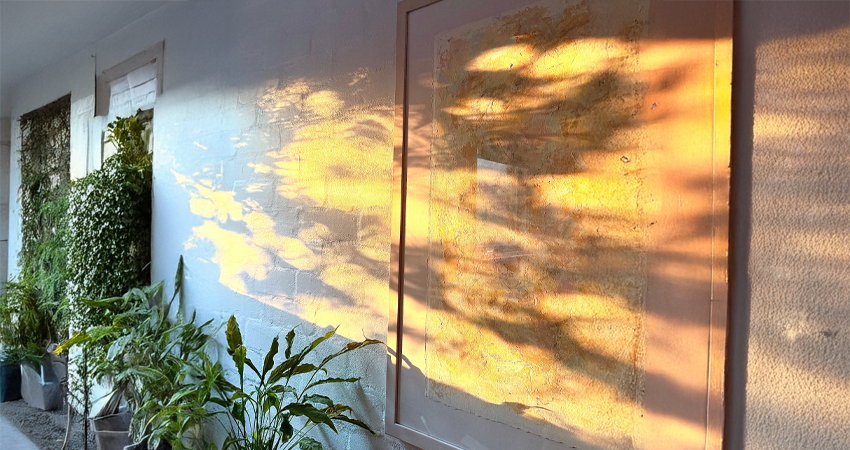Comments from a young girl and an older man
“I wish I wasn’t so sensitive” said a young girl.
So many thoughts went through my mind. Our society has made her feel like sensitivity is a weakness that will stop her from getting ahead in life. She’s heard words like “Don’t be so sensitive” and “You need to be more resilient”.
“It’s true”, I replied. Being sensitive means you get hurt, you feel pain more closely. But, you get to squeeze every bit of juice out of life that’s there. It means a life lived with open arms ready to embrace everything that comes your way. You feel what others don’t – living viscerally when others are numb. Being sensitive is actually a superpower I said.
She looked at me and smiled.
Why is our world so quick to toughen us? We need resilience I agree, but why is sensitivity seen as a weakness rather than an asset? In my last post I wrote about living a soft life and how difficult that is in a world focused on resilience commanding us to “toughen up”. What practices or rituals do we need to soften us so we connect with the divine/universe/Reality/God and each other?
An older man sat across from my table at the cafe where I was sipping my morning coffee. “What are you doing for Easter?’“ he asked. “Not much. Family. I may go to a service of shadows.” He told me that he used to follow the Christian calendar and remembered that it was Palm Sunday the other day. He shared with me that when he was growing up they used to place little palm branches and other bits and pieces from trees in their house each Palm Sunday. “I don’t do that anymore.” I asked him whether he thought that our society is missing rituals and practices that guide us through the many seasons of life – rituals that carry the power to console, transform and empower us. He wondered about that. “But I’m not religious anymore” he said. Do we need to be religious in order to connect with ourselves or That Which is Beyond, and each other? There is potency in rituals to help us connect and soften us so we can simply be and feel in our daily lives.
A ritual can be anything. It is what we practice regularly and use to console, empower and transform. I like listening to the mystics from different traditions to glean from their wisdom. Mystics have the ability to see what is hidden and bring it to our attention – things that we have known all along are good and true. I like how mystics live with the complexity and mystery of life yet practice simplicity and an uncomplicated way of being. They distill life to its essence and remind us what is important and what is not.
Today, I’m thinking about a very simple practice that I learned years ago from Trappist monk Thomas Keating. It’s a ritual that softens us and fills us gently with the life-force that we need to simply be in a world that is often telling us to “Stop being so sensitive”. It’s called centering prayer. But we can also call it a meditation. In his book Consenting to God as God is, Keating outlines this meditation.
The idea is to simply rest in God (or whatever you call “That Which is Beyond”). This doesn’t mean to do nothing, rather to let go of our interior dialogue and noise. We remain open to anything that the Spirit might want to do and speak to us. It is not passive because there is active listening and consent involved. Don’t worry if your mind wanders, gently bring it back to the present moment. The way you can do that is by repeating your sacred word. Your sacred word is the word that comes to you to bring you comfort, peace and focus your attention on your inner self. The word could simply be “love” or “peace” or “You are loved”.
Do you have a Sacred Word that centres you?
You are not looking for an experience in this ritual. There is a belief that God or Spirit is present whether you feel that or not and there is the knowledge that no experience captures the fullness of God. God is beyond our human ability to grasp – otherwise God is not God. There is no “content” in this meditative ritual, simply silence, presence and stillness – the sacred word bringing you back to your true self.
The practice can be elaborated and if you’d like to know more read Chapter 6 of the book I mentioned. But that’s it in its essence.
I have practiced this meditation on and off for years and in each season of my life it looks a little different. These days I have little time so I can only do this ritual for a few minutes rather than extended periods of time. Practiced mystics can stay in this state of meditation for hours. These days I wake up, go to my favourite window that looks out over the urban treetops. The sun reflects onto the window and I stand there with my chin on my hand, eyes closed , sun on my face. I start the centring prayer. It’s just me, God and the tress. I stay like this for several minutes – enough time to feel as though something has shifted within. In the mornings I usually wake up feeling tense with lots of inner noise – it’s de-centring. Centring prayer helps me to soften, slow down and connect with myself and God. I become sensitive to my inner world and more capable to practice kindness and love towards others as I go about my day.

In a world that tells us to be resilient – that’s helpful in some ways- I also think rituals that mould us to be soft and sensitive are not to be neglected.
Rev. Dr Karina Kreminski, Mission Catalyst – Formation and Fresh Expressions, Uniting Mission and Education. Karina also blogs at An Ordinary Mystic





